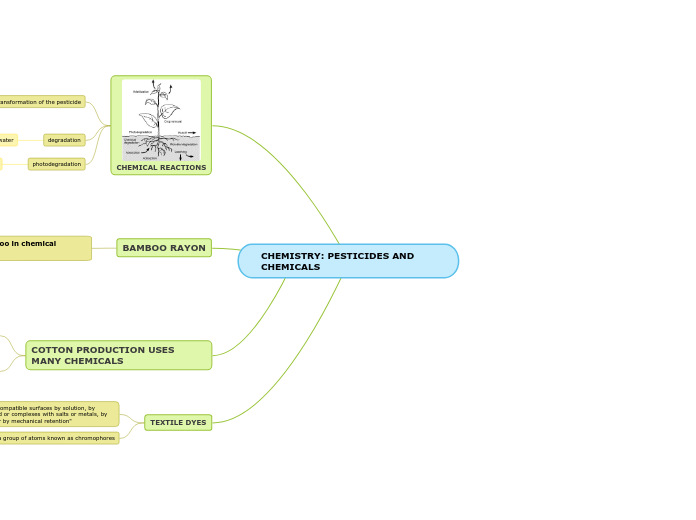CHEMISTRY: PESTICIDES AND CHEMICALS
CHEMICAL REACTIONS
non-biological breakdown or transformation of the pesticide
change them from one omopound to one or more derivatives - reactions happen based off PH and moisture levels of the soil
chemical degradation
degradation
hydrolysis, reaction between pesticides and water
water degrades pesticides by dividing large molecules into smaller ones, occur in the surface or root zone or whenever source of water is available
photodegradation
breaking down pesticides by sunlight
BAMBOO RAYON
made by cooking bamboo in chemical solvents
sodium hydroxide and carbon disulfide
hydroxide ion (pH effect) found in sodium hydroxide is hazardous for the environment. A high concentration in water will result in toxic effects for aquatic organisms e.g. fish.
carbon disulfide is known for evaporating into the air and running off into waterways, contributing to global pollution
diluted solution of sodium hydroxide is added to the cellulose sodium xanthogenate.
also called viscose rayon:" chemically processed cellulose fibers.
chemicals transform the stalk into long cellulose strands which then create bamboo textiles.
COTTON PRODUCTION USES MANY CHEMICALS
Aldicarb: C7H14N2O2S
most toxic chemical
Endosulfan: C9H6Cl6O3S
most widely used pesticide
causes fatal poisoning
TEXTILE DYES
"dyes can adhere to compatible surfaces by solution, by forming covalent bond or complexes with salts or metals, by physical adsorption or by mechanical retention"
composed of a group of atoms known as chromophores
